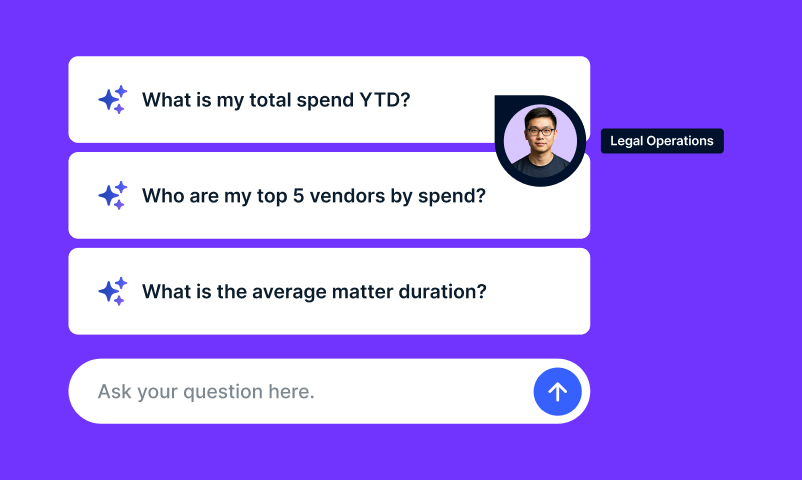
Technology is increasingly vital in helping in-house legal teams optimize their time and resources. The transformation of working practices over recent years, with the continued trend for remote working, means IT tools are more important than ever for communication, administration, data management, and knowledge sharing at work. In addition, legal teams require specific legal tech software to manage and automate everything from spend management and billing to matter management, reporting, and administration.
In-house legal teams face an array of vendors to choose from. With so much choice, how should in-house legal teams choose the right technology vendor for their needs?
To help you, we’ve compiled a checklist of key considerations:
YOUR LEGAL TECH VENDOR CHECKLIST
1. DOES THE TECHNOLOGY MEET DATA SECURITY REQUIREMENTS?
The data handled by legal teams are too sensitive to take any risks. You need to be confident the technology you choose meets every security requirement of your IT department. Look for solutions that offer data security assurances, such as banking-grade encryption, single-jurisdiction hosting, and compliance with regulatory standards, such as ISO 27001 and GDPR.
2. DOES THE TECH VENDOR MEET COUNTRY-SPECIFIC REQUIREMENTS?
Define your requirements by thinking through your daily work and identifying what is missing. How can technology help? Ask vendors how their technology can address your specific challenges. For example, when your company is based in Europe, can the technology meet European country-specific requirements, such as taxation and invoicing?
3. WHAT LEVEL OF CUSTOMER SUPPORT IS ON OFFER?
Does the vendor have a professional customer service team? Will you be assigned a dedicated customer success manager? Does the vendor have dedicated European support capabilities? How many languages are supported? Do they have the resources to provide the support you need?
4. IS THE VENDOR TRUSTED BY CLIENTS AND INDEPENDENT COMMENTATORS?
Check out client testimonials, read case studies and ask to speak to clients. Find out if the vendor and its solutions are trusted and valued. Look for independent approvals or verifications from respected organizations, such as Hyperion Global Partners. Does the vendor have a network of trusted partners to support and champion its solutions?
5. DOES THE TECHNOLOGY INTEGRATE WITH EVERYDAY IT SYSTEMS?
We all use various software and IT systems to support efficient collaboration and communication. You need to find legal technology that integrates fully with common software from Microsoft, Google, and others. Choose interoperable legal technology tools that meet you where you work.
6. CAN YOU REQUEST A FREE DEMO?
Ask all shortlisted vendors for a demonstration of their software and its application to a practical example. Before committing to new software, take it for a test drive. Most vendors offer a free trial to test features, benefits, and usability.
MEET LOCALLY
If you need help choosing a vendor, you can meet many leading legal tech providers at conferences across the United States and Europe throughout the year. These provide an excellent opportunity to learn more about your region’s legal tech landscape, meet some of the people you could work with, ask questions, and sample the technology.
Request a demo of BusyLamp eBilling.Space today.











